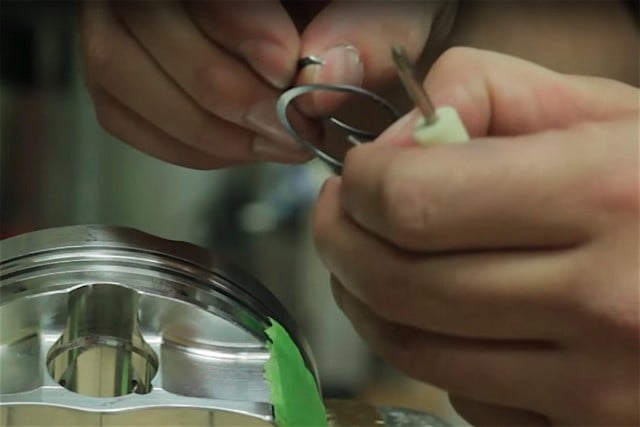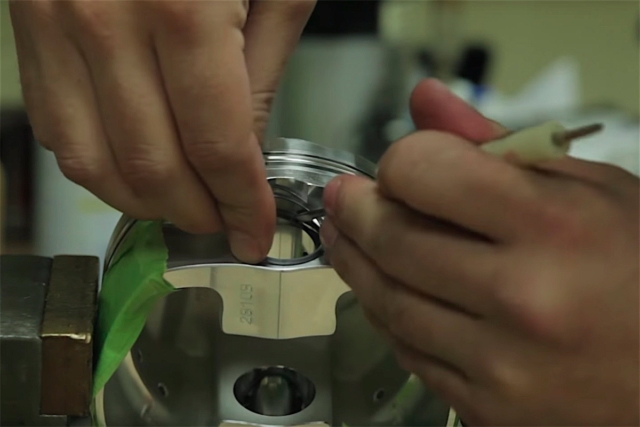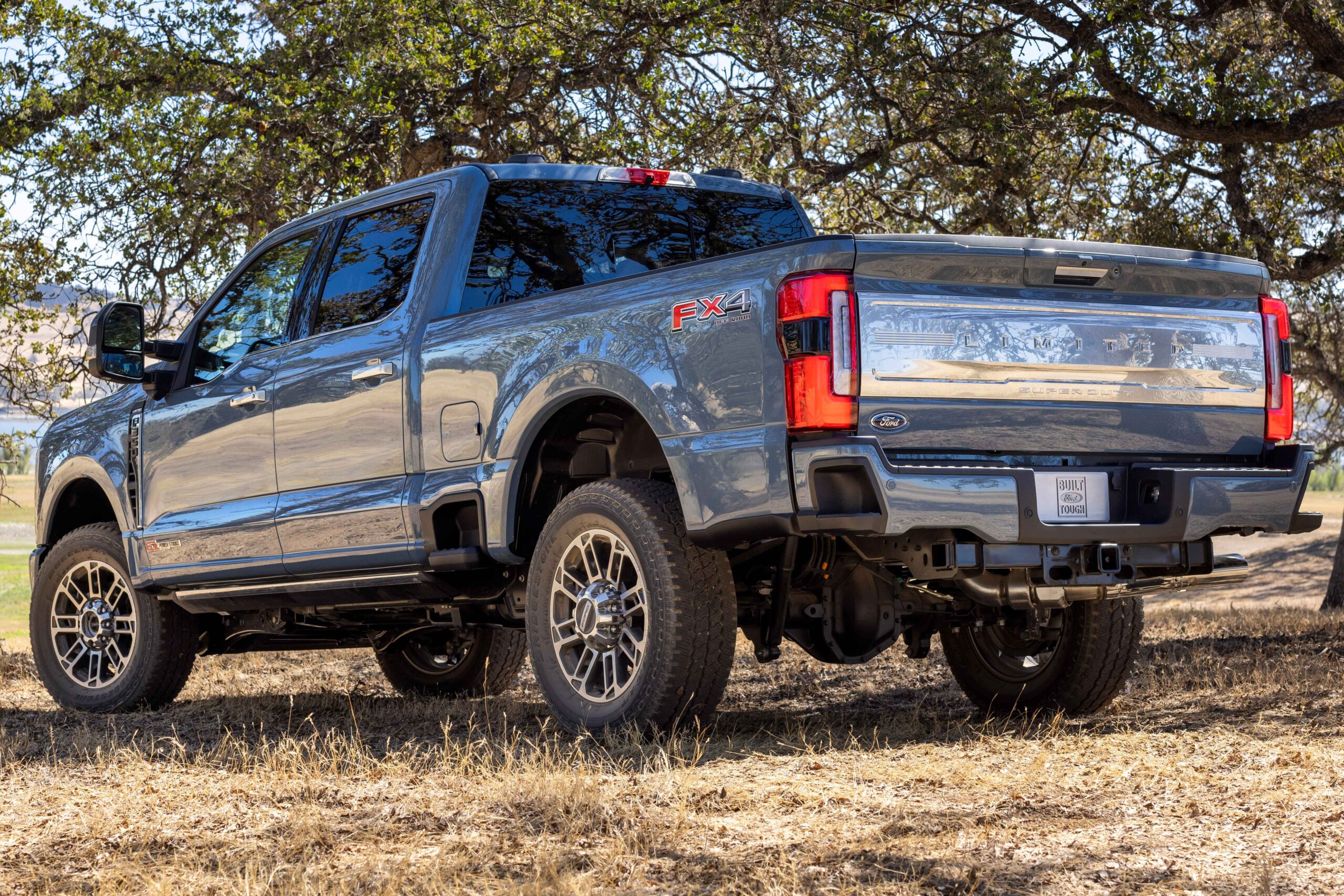Every now and then you run into a fastening system outside the path you normally travel. Usually, those with mechanical inclination and a little resourcefulness pull through, but some of the simplest little fasteners can cause grief for the unfamiliar. In this case we are referring to spiral locks — if you’ve been around engine building for any amount of time you have come across these, but your casual car guy probably has not.
Spiral locks are a simple piece of flattened spring steel like a slinky or keychain ring, and are most commonly used as wrist pin retainers. Manufacturers often employ c-clips or even teflon buttons to keep the wrist pins centered, but in the racing and performance engine world, spiral locks are preferred for their security and reliability.
 While the design and construction of these fasteners is simple they can be deceptively complicated to install. The intuitive desire is to thread them into the machined retaining groove with a finger, but the drag and tight-tolerances make this a chore. In this quick video Mike Panetta of Diamond Racing Products shows us the easy way to lock in your pins.
While the design and construction of these fasteners is simple they can be deceptively complicated to install. The intuitive desire is to thread them into the machined retaining groove with a finger, but the drag and tight-tolerances make this a chore. In this quick video Mike Panetta of Diamond Racing Products shows us the easy way to lock in your pins.
With the piston protected with some tape and gently held in a vice, Panetta explains that it is best to start the spiral lock by spreading it out so that a loose end can be fed into the groove. Without threading, the lock can be started just enough to stay without popping out. With a small flat-blade screw driver or machinist’s pick, the spread-out coil can then be pushed straight down until it clicks into the groove.
The resilience of the spring steel will allow the spiral lock to deform slightly and scrape along the pin bore before dropping into the groove, but will not damage it. However, take care not to gouge or scratch the pin bore with the screwdriver or pick.
With the spiral locks fully seated they will keep the pins securely located, and remember spiral locks are reusable, not a throw away part unless they exhibit damage. For questions on pistons or fastening solutions talk to Diamond Racing Products.

















